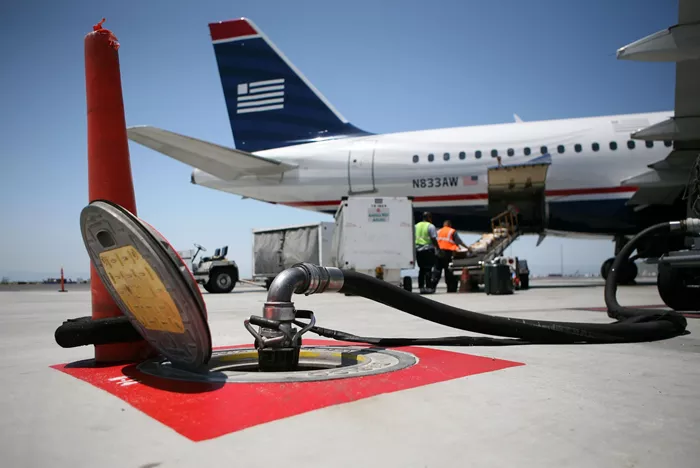Aviation gasoline, commonly known as avgas, is a specialized fuel used to power piston-engine aircraft. It differs significantly from automotive gasoline and jet fuel, providing the necessary combustion characteristics required for high-performance aviation engines. This article explores the properties, production, types, uses, and handling of aviation gasoline.
What is Aviation Gasoline
Aviation gasoline is designed to meet strict quality and performance standards. It must provide reliable combustion under various conditions, including high altitudes and temperature variations. Some of its key characteristics include:
- High Octane Rating: Avgas has a higher octane rating than automotive gasoline to prevent engine knocking and ensure smooth operation.
- Low Volatility: It has controlled volatility to prevent vapor lock at high altitudes.
- Lead Content: Some avgas formulations contain tetraethyl lead (TEL) to enhance performance and prevent knocking.
- Energy Density: Avgas provides a high energy content, ensuring efficient fuel consumption for long-distance flights.
How Aviation Gasoline is Produced
Aviation gasoline undergoes a refining process similar to that of automotive fuel, but with additional refining steps to ensure purity and performance. The production process includes:
- Fractional Distillation: Crude oil is heated to separate different hydrocarbons.
- Blending: Various hydrocarbons are mixed to achieve the desired octane rating and energy content.
- Additive Introduction: Essential additives, such as antioxidants and corrosion inhibitors, are introduced.
- Quality Control: Extensive testing ensures that avgas meets aviation standards before distribution.
Types of Aviation Gasoline
Aviation gasoline is categorized based on its octane rating and lead content. The most common types include:
AVGAS 100LL
- Octane Rating: 100
- Lead Content: Low lead (LL)
- Usage: Most commonly used avgas in general aviation
- Advantages: Provides high performance with reduced lead emissions
AVGAS 100
- Octane Rating: 100
- Lead Content: High
- Usage: Older aircraft and high-performance engines
- Disadvantages: Higher lead emissions, phased out in some regions
Unleaded AVGAS (UL94 and UL100)
- Octane Rating: 94-100
- Lead Content: None
- Usage: Alternative for aircraft that do not require high-octane leaded fuel
- Benefits: Environmentally friendly with lower emissions
Uses of Aviation Gasoline
Aviation gasoline is mainly used in piston-engine aircraft, which are common in general aviation, training, and private flying. Some specific applications include:
- Small Aircraft: Light planes used for personal and business travel.
- Training Aircraft: Flight schools use piston-engine aircraft for pilot training.
- Agricultural Aviation: Crop-dusting planes rely on avgas for efficient operation.
- Aerial Surveying and Photography: Planes equipped for mapping and aerial photography use avgas.
Differences Between Aviation Gasoline and Jet Fuel
Aviation gasoline is distinct from jet fuel in composition and use. The key differences include:
| Feature | Aviation Gasoline (Avgas) | Jet Fuel |
|---|---|---|
| Engine Type | Piston Engines | Turbine Engines |
| Composition | High-octane gasoline | Kerosene-based |
| Additives | Tetraethyl lead, antioxidants | Anti-icing, lubricity enhancers |
| Environmental Impact | Contains lead (except UL variants) | Lower lead content but still has emissions |
| Availability | Limited to smaller airports | Widely available worldwide |
Environmental and Health Concerns
One of the main concerns with aviation gasoline, particularly leaded variants, is its environmental impact. Tetraethyl lead (TEL) contributes to air pollution and poses health risks. Efforts to reduce lead content include:
- Development of unleaded avgas alternatives.
- Stricter environmental regulations.
- Research into sustainable aviation fuels (SAF).
Storage and Handling of Aviation Gasoline
Proper storage and handling of aviation gasoline are critical to ensure fuel quality and safety. Key considerations include:
- Temperature Control: Store avgas in a temperature-controlled environment to prevent evaporation and degradation.
- Contamination Prevention: Use dedicated storage tanks to avoid contamination with other fuels.
- Regular Testing: Fuel quality should be tested periodically to detect water or particulate contamination.
- Proper Labeling: Aviation gasoline must be clearly labeled to prevent mix-ups with other fuel types.
Conclusion
Aviation gasoline plays a crucial role in general aviation, providing reliable fuel for piston-engine aircraft. While leaded avgas remains in use, advancements in unleaded alternatives and biofuels are shaping the future of aviation fuel. Understanding its properties, types, and environmental impact helps pilots, engineers, and regulators make informed decisions about its use and future developments.

